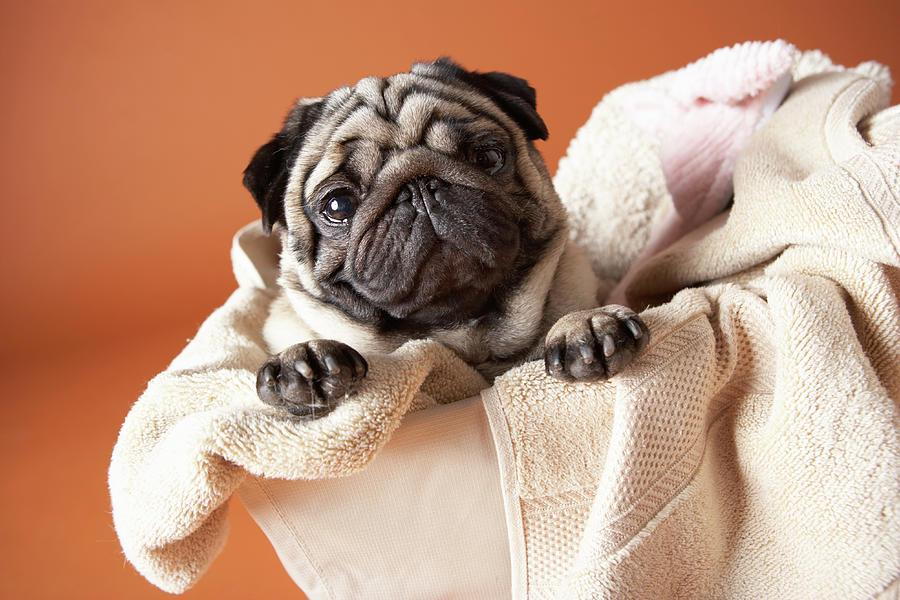Spring Cleaning For Your Pets

- posted: Mar. 04, 2019
When the snow starts to melt and temperatures begin to rise, it is time to start thinking about spring cleaning. While you rummage through your junk drawer and clear out your cluttered closets, don’t forget to do a little spring cleaning for your pets. Cleaning their toys and bedding is an important task that many pet parents overlook – don’t make the same mistake yourself!
Cleaning soft toys
To clean your pet’s favourite plush toys, your best bet is to use the washing machine. Throw all of your pet’s fabric toys into a pillow case and wash them on the gentle cycle in cold water. Keep in mind that the washer won’t be completely full (unless your pet has a giant collection of toys), so use less soap than you normally would. You might also consider using an all-natural, perfume-free detergent, so the toys will come out clean but won’t taste like soap. After washing the toys, squeeze out any excess moisture then hang them up to dry in the warm sun.
Sanitizing hard toys
Hard toys like bones and rubber chew toys can harbor bacteria in the small scratches that accumulate as your pet plays with them. In order to keep these toys safe for your pet, you need to sanitize them once in a while. Start by dampening a soft cloth or brush and use it to spot-clean any areas that are covered with dirt or other debris. Then, fill a large bucket with one part warm water and one part distilled white vinegar. Soak the toys for about thirty minutes then rinse with warm water and dry thoroughly. Any toys that can be filled with food should be cleaned daily along with your pet’s food and water bowls.
Washing pet bedding
Your pet’s bedding can become dirty very quickly if he uses it every day. Not only does pet bedding tend to accumulate hair, but it also collects dirt, dander, and other debris. Washing your pet’s bedding is not quite so simple as just throwing it into the washing machine. You should go over the bedding with a lint roller to remove hair before washing or shake it out first. When washing your pet’s bedding, use a little less soap than you normally would and choose an all-natural, fragrance-free detergent. Do not use bleach when washing your pet’s bedding and avoid scented fabric softeners.
Spot-cleaning pet furniture
You can’t exactly throw a cat tree into the washing machine or soak a structured dog bed in a vinegar-and-water solution. But just because pet furniture is a little trickier to clean doesn’t mean you should skip it during your spring cleaning sweep. Start by using a vacuum cleaner with a hose attachment to remove accumulated hair and other debris, then scrub carpeted or padded areas with a damp cloth or scrub brush to remove stains. For stubborn stains, use a little unscented laundry detergent or a pet-safe fabric cleaner. After cleaning the furniture, let it air dry before letting your pet use it.
Is it safe to use bleach?
When it comes to keeping your pet’s toys clean, you need to be very careful about the cleaning products you choose. It is important to make sure that the toys are disinfected, but you don’t want to use anything that could harm your pet. Bleach is a go-to when it comes to disinfecting things, but it is a substance that can be dangerous for pets. The American Society for the Prevention of Cruelty to Animals (ASPCA) says that it is safe to clean dog toys using bleach as long as it is properly diluted and the toys are rinsed well afterwards. Because vinegar is also effective as a disinfectant, however, many dog owners would agree that there is no reason to take the risk.
While cleaning your pet’s toys, you’ll need to use your judgment to determine whether something is in bad enough shape that it needs to be thrown away. Hard toys should be discarded if they have deep scratches that could harbor bacteria and plush toys should be thrown away when they begin to tear. Properly cleaning and caring for your pet’s toys can help them to last longer and to ensure that they are safe for your pet to play with.
Our Location
Peconic Bay Animal Hospital
1149 Old Country Rd Suite D1
Riverhead, NY, USA

